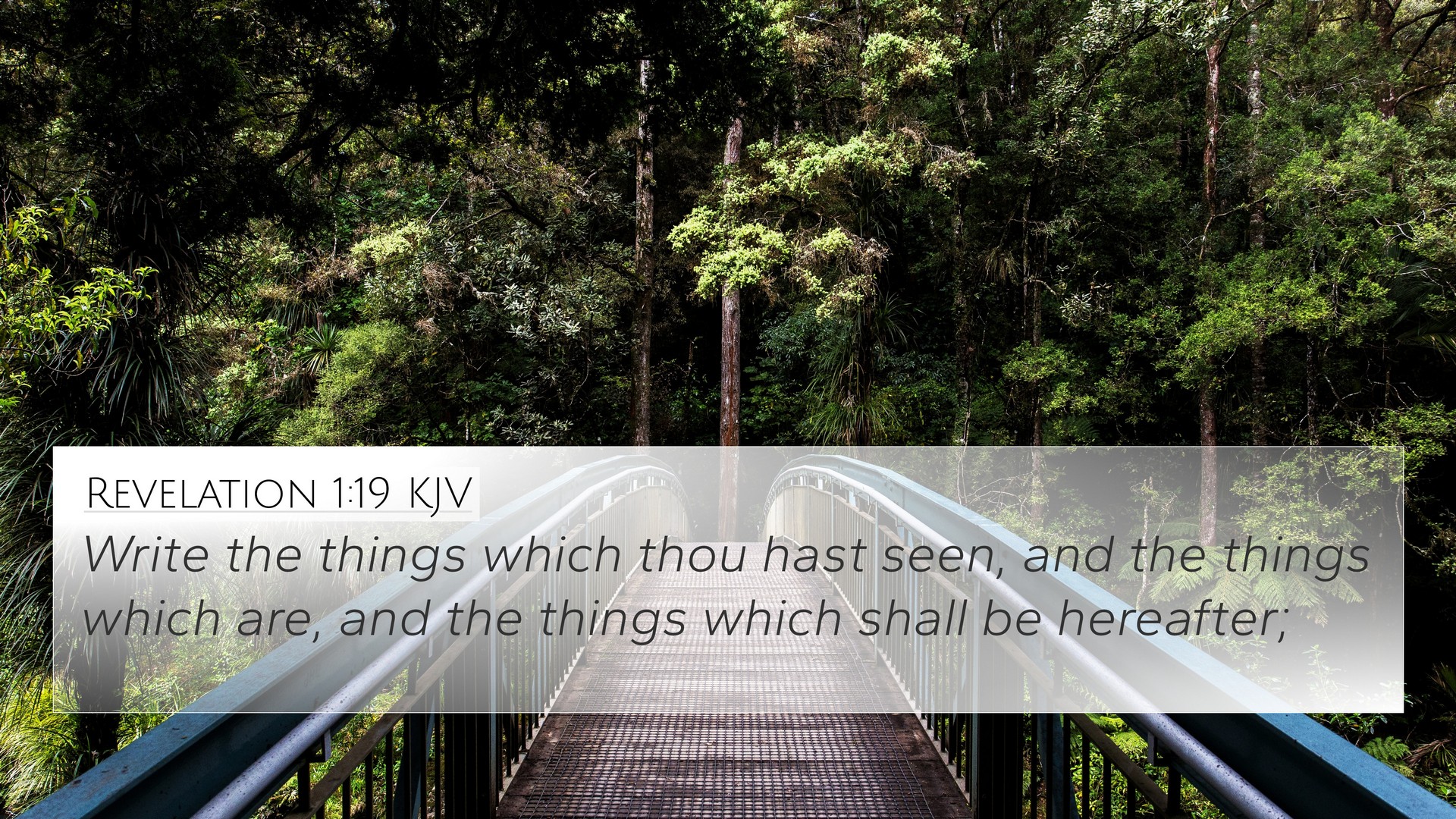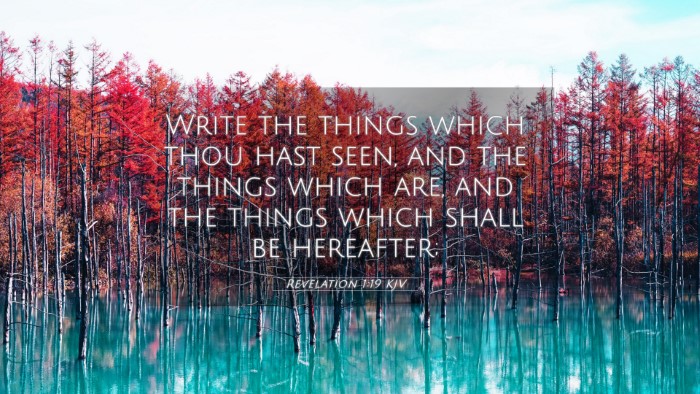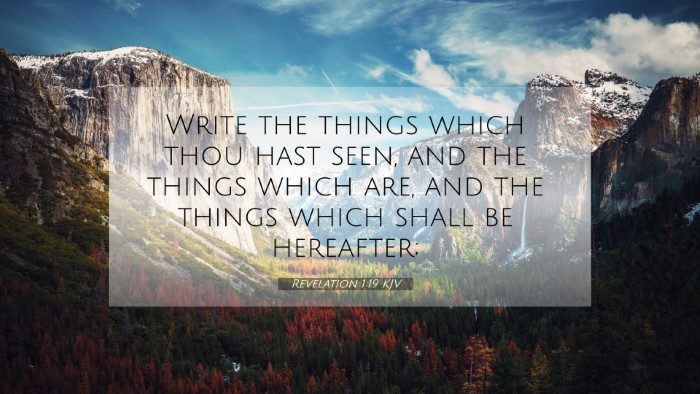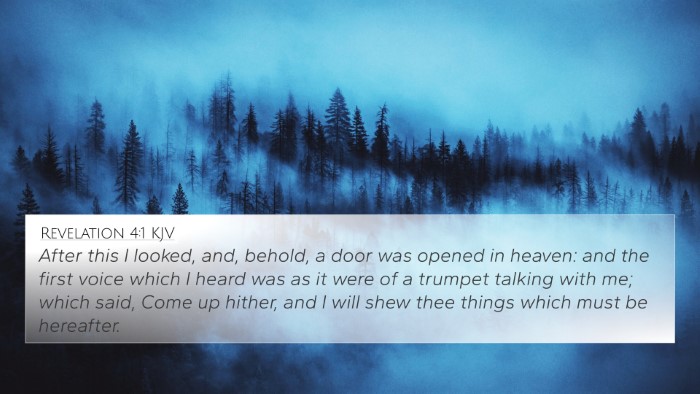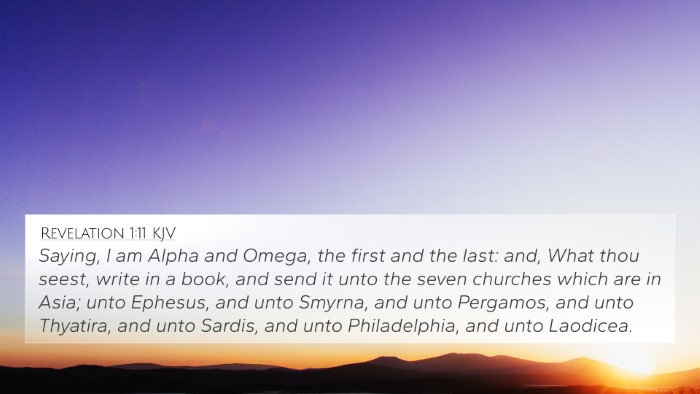Understanding Revelation 1:19
Verse: Revelation 1:19 states, "Write therefore the things that you have seen, those that are and those that are to take place after this."
Summary of the Verse Meaning
Revelation 1:19 serves as a pivotal instruction given to John, guiding him on what to document for the benefit of the Church. This verse can be dissected into three parts: the past ("the things that you have seen"), the present ("those that are"), and the future ("those that are to take place after this"). Understanding these aspects is crucial for interpreting the prophetic messages within the Book of Revelation.
Insights from Public Domain Commentaries
-
Matthew Henry: Henry suggests that this divine command emphasizes the importance of prophecy in revealing God's plans. Each aspect John is instructed to write about symbolizes the unfolding of divine truths that stretch across time.
-
Albert Barnes: Barnes notes that John is essentially being told to record not only the visions he receives but also their implications for the current realities and impending events. This reinforces the need for vigilance and preparedness amongst believers.
-
Adam Clarke: Clarke highlights the continuity of revelation, linking John's visions with past revelations. The command to write also signifies an enduring truth that transcends time, affirming that God continues to communicate with His people in various eras.
Thematic Connections
This verse establishes a framework for understanding the connections between different parts of the Bible. By archiving John's experiences, God invites readers into a deeper, thematic Bible verse connection that spans both the Old and New Testaments.
Key Cross References
Revelation 1:19 is connected to several critical Bible verses, including:
- Daniel 2:28: "But there is a God in heaven who reveals mysteries..."
- Habakkuk 2:2: "And the Lord answered me: Write the vision; make it plain on tablets, so he may run who reads it."
- Revelation 21:5: "And he who was seated on the throne said, 'Behold, I am making all things new...'"
- 2 Peter 1:20-21: "Knowing this first of all, that no prophecy of Scripture comes from someone’s own interpretation..."
- 1 Thessalonians 5:20-21: "Do not despise prophecies, but test everything; hold fast what is good."
- Luke 1:3: "It seemed good to me also, having followed all things closely for some time past, to write an orderly account..."
- John 14:29: "And now I have told you before it takes place, so that when it does take place, you may believe."
Application of Cross-Referencing in Revelation 1:19
This verse is a prime example of how to employ tools for Bible cross-referencing. By locating connections between various scriptures, believers can gain a more comprehensive understanding of prophetic literature.
How to Use Cross-References in Bible Study
Engaging in cross-reference Bible study encourages deeper biblical engagement, revealing thematic links between texts. Here’s how one can benefit:
- Utilizing a Bible concordance allows readers to explore related verses based on keywords.
- Employing a Bible cross-reference guide helps in discovering inter-textual links across various biblical books.
- Practicing cross-referencing Bible study methods aids in thematic exploration, enhancing sermon preparation and personal study.
Conclusion
Revelation 1:19 serves not only as a directive to John but also as an invitation to all believers to explore and understand the intricate connections within the Bible. The act of writing down and cross-referencing these verses fosters a richer dialogue between past, present, and future revelations of God’s word.
